Abstract
The incubation of endotoxin derived from Veillonella alcalescens or Serratia marcescens with fresh guinea-pig serum leads to the production of a factor which contracts guinea-pig ileum. This factor has been identified as an anaphylatoxin since it causes tachyphylaxis and its activity is abolished by antihistamines. The activity is not generated if the serum has been heat inactivated or if the reaction is carried out at 0° or in the presence of EDTA. The complement system (C′) is implicated in the generation of this anaphylatoxin by the above data and by static and kinetic C′ consumption studies which show a correlation between the disappearance of the late acting C′ and the appearance of gut contracting activity. Endotoxoid preparations which do not utilize C′ are not able to generate anaphylatoxin. A further parallel between classical anaphylatoxin and the endotoxin-generated factor is found in the pattern of mammalian sera which support the reaction. In view of the similarities between the biological properties of anaphylatoxin and the syndrome of endotoxic shock, it is suggested that some of the manifestations of the latter might result from an interaction between endotoxin and the C′ system leading to the generation of an anaphylatoxin.
Full text
PDF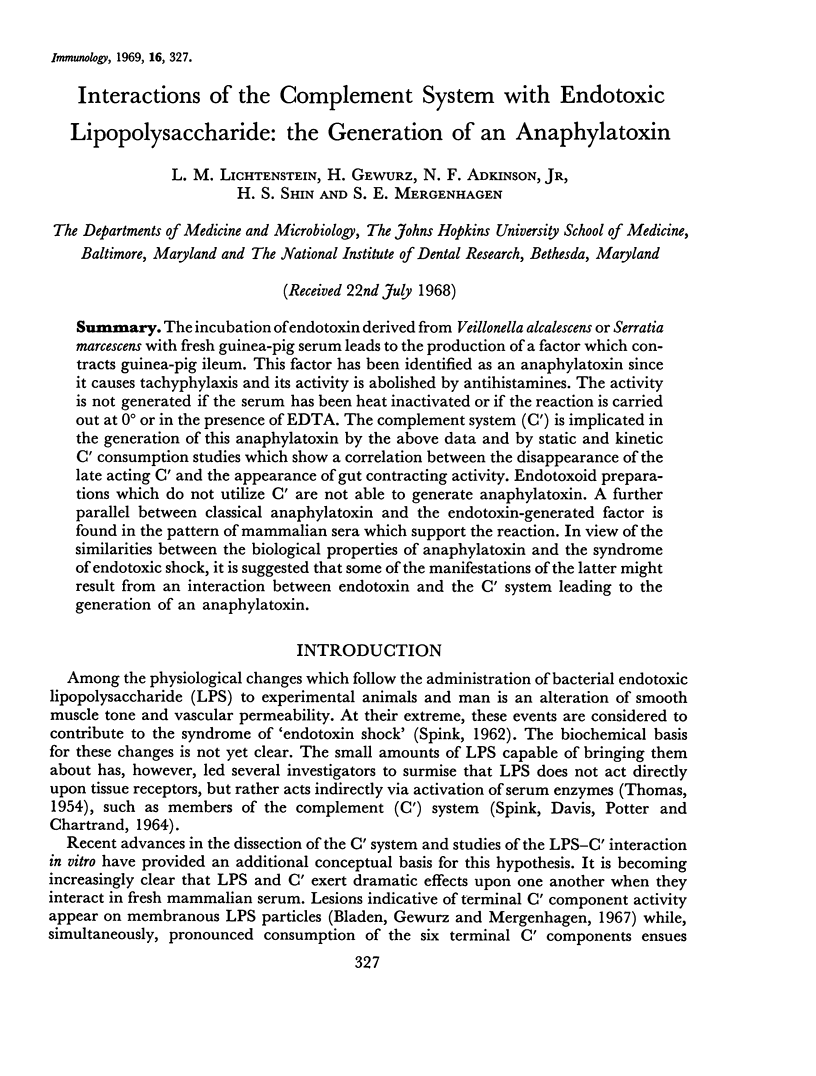
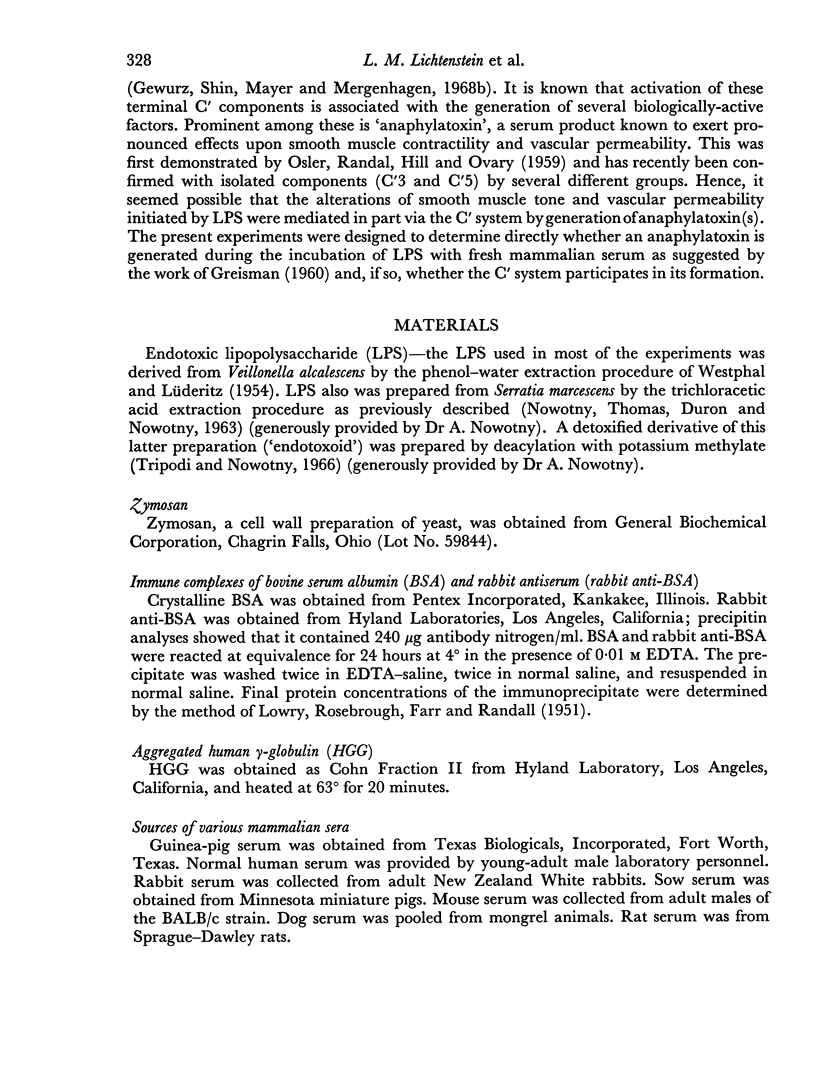
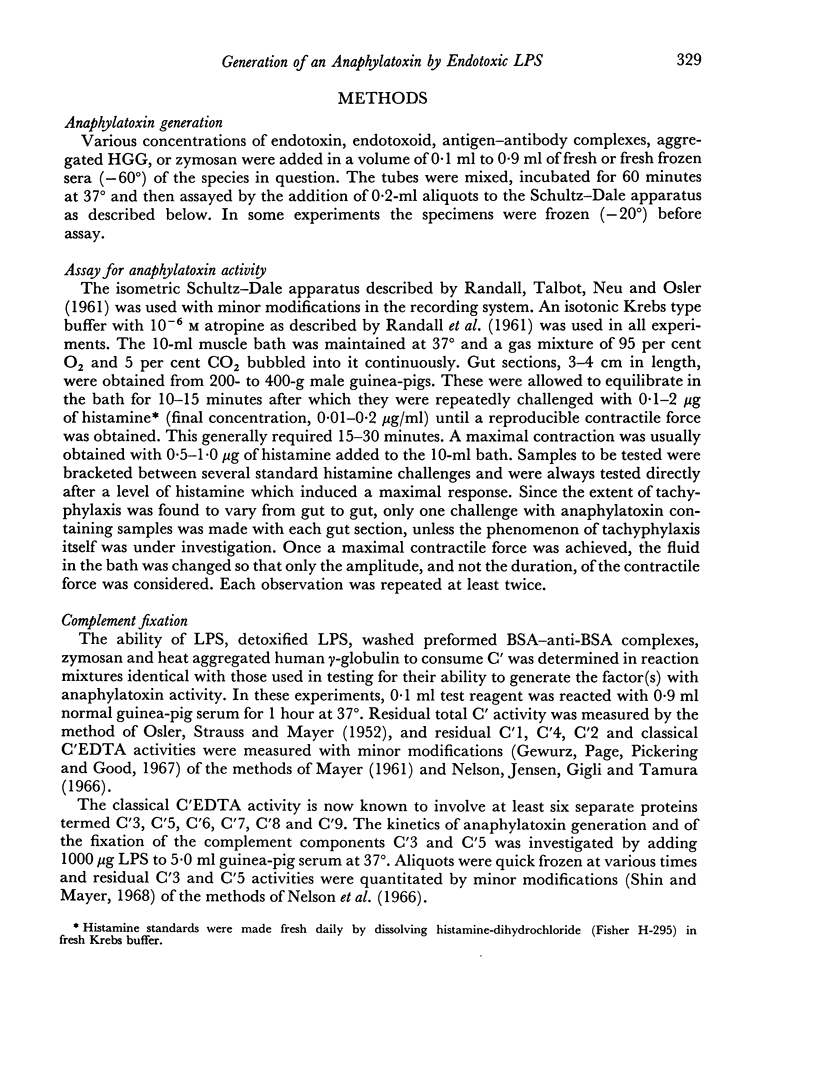
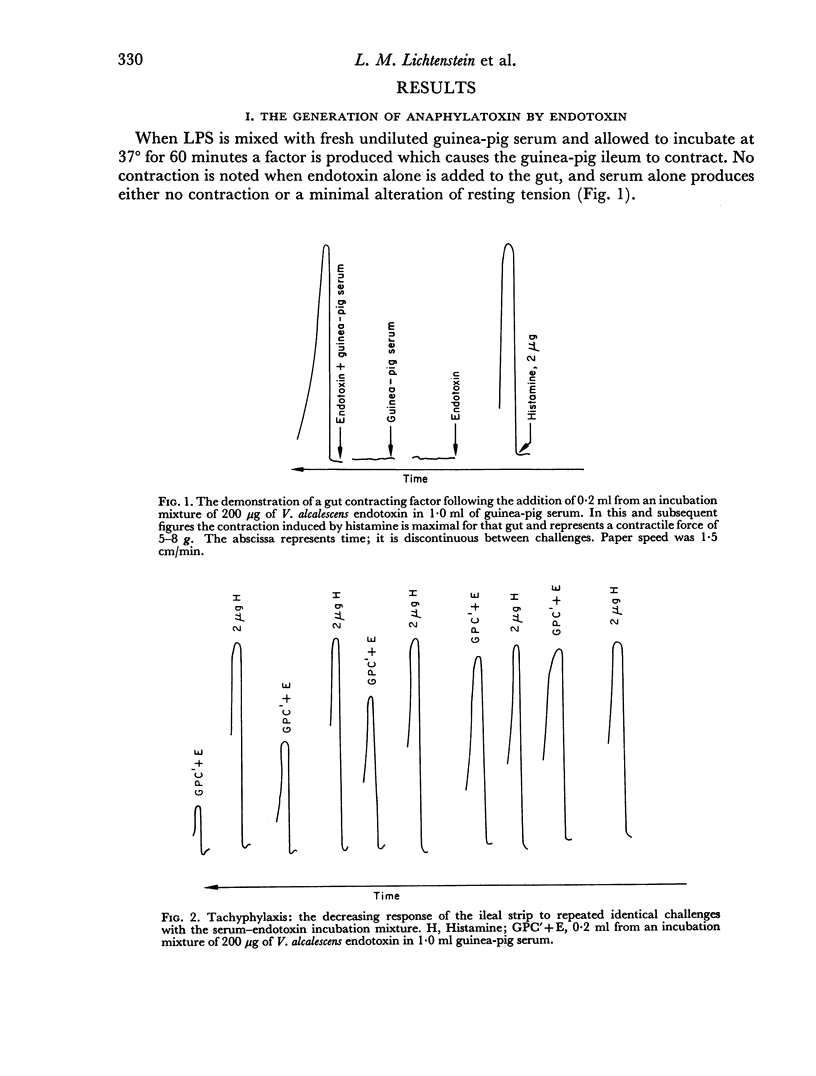
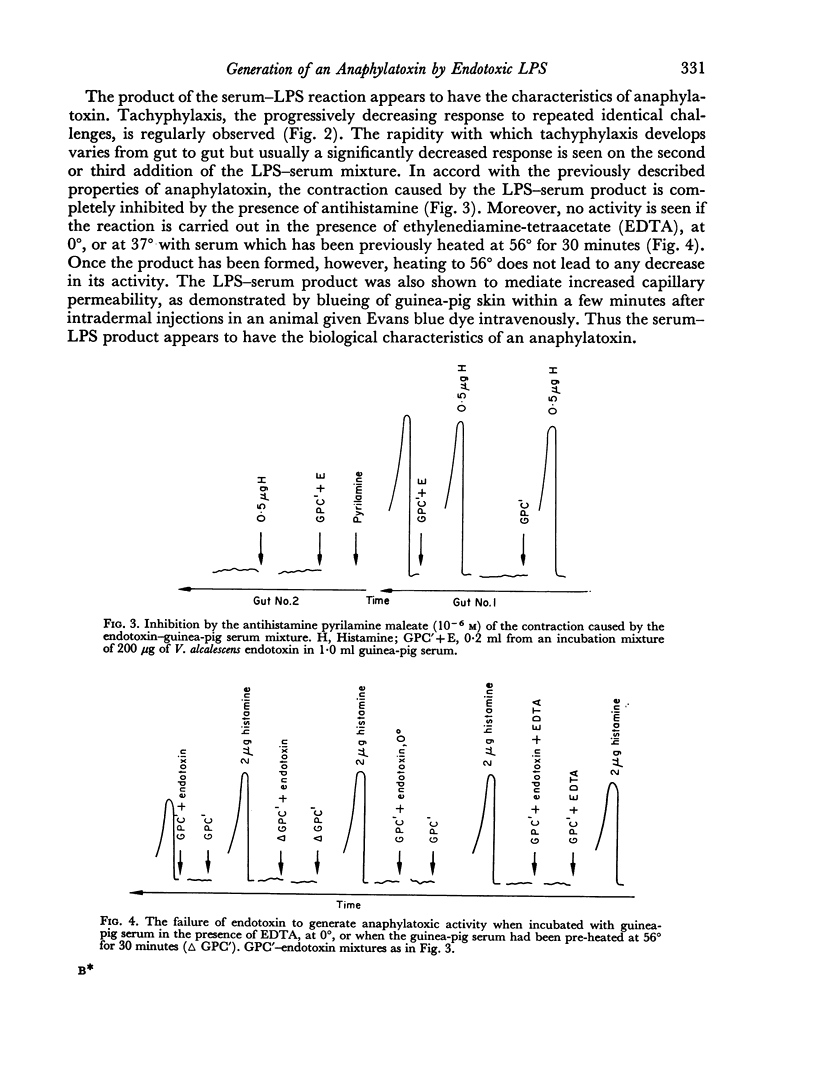
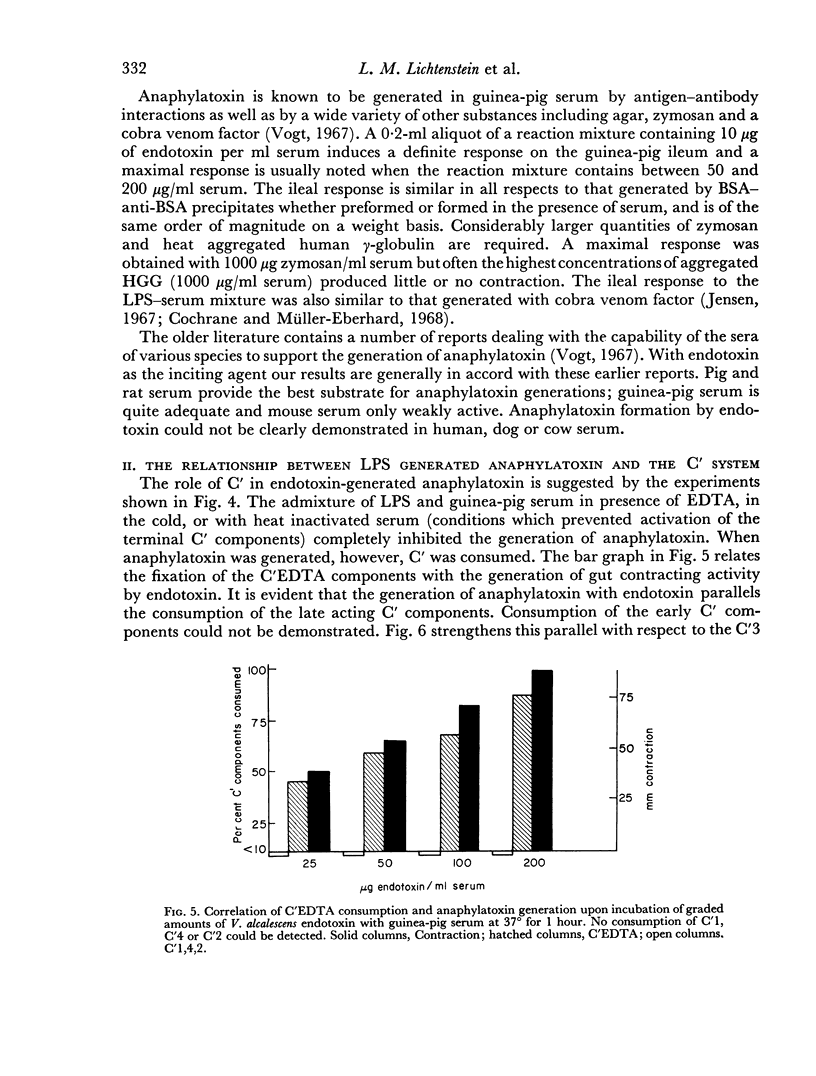
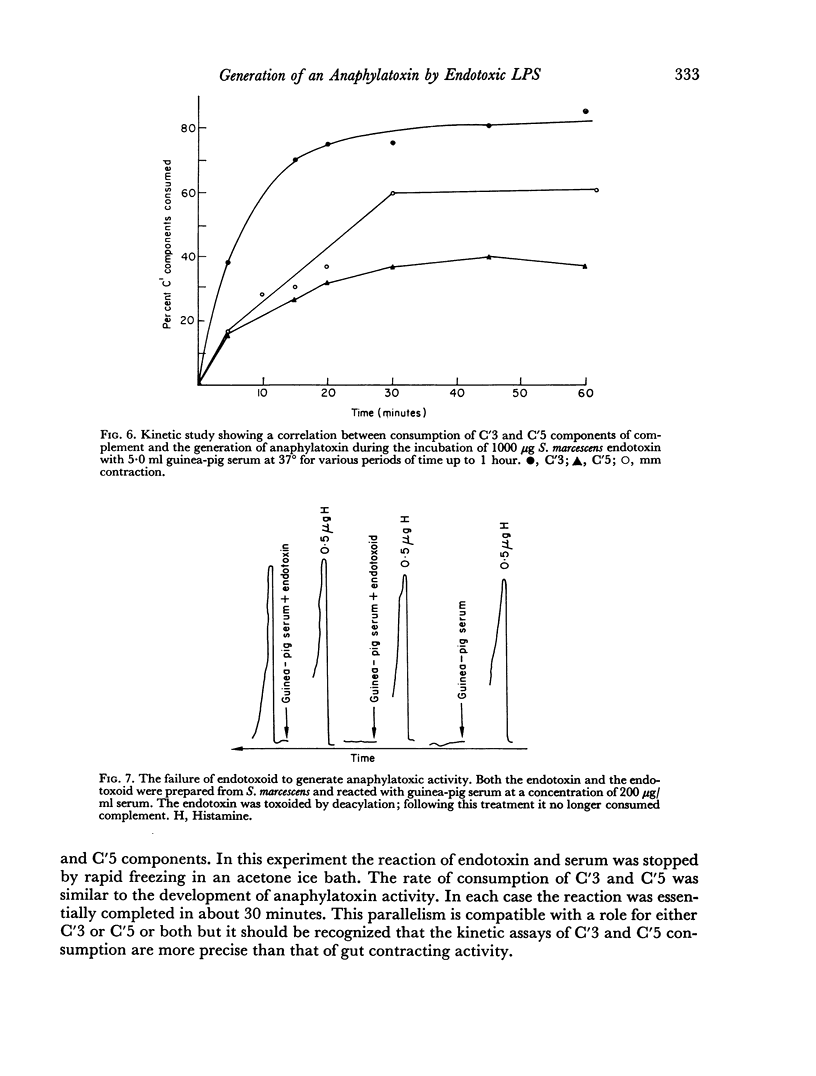
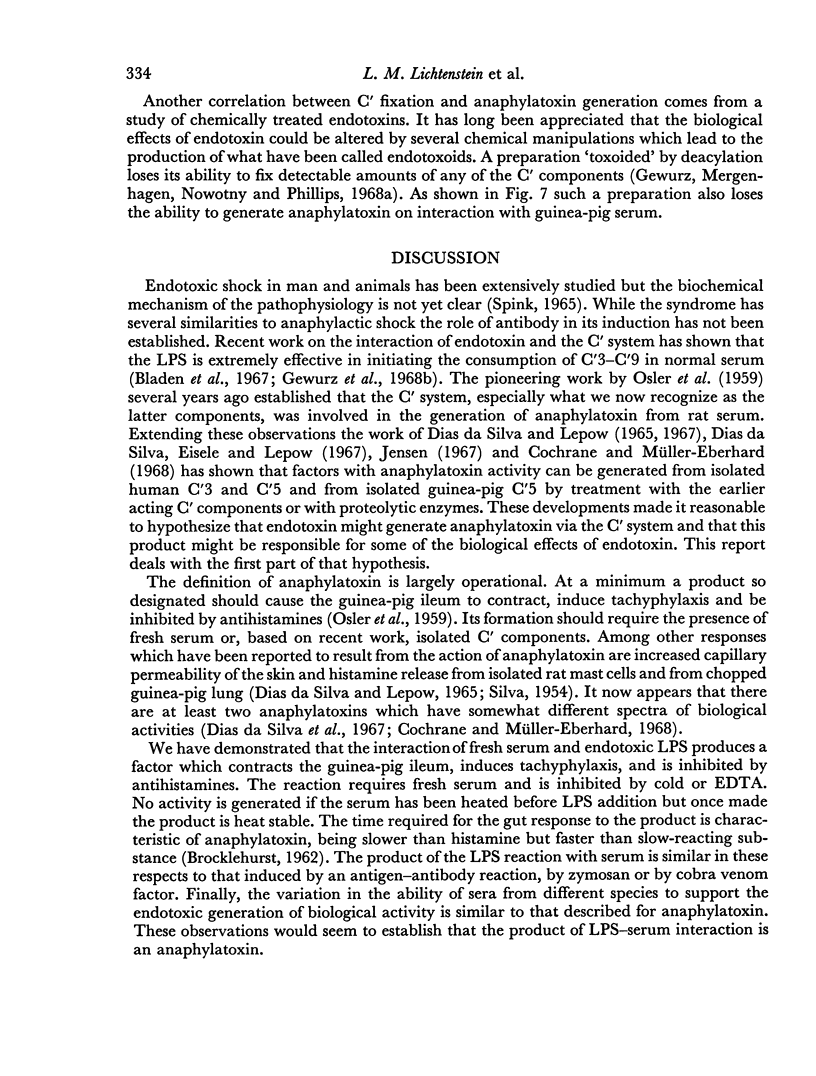
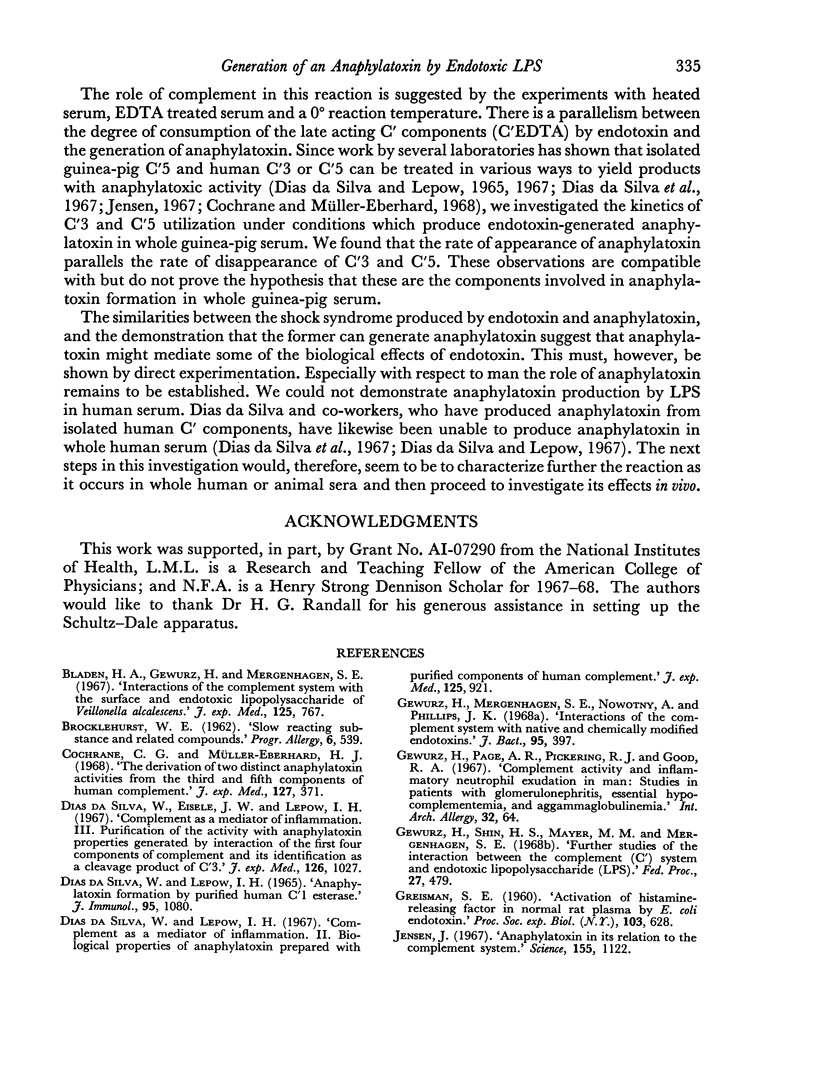
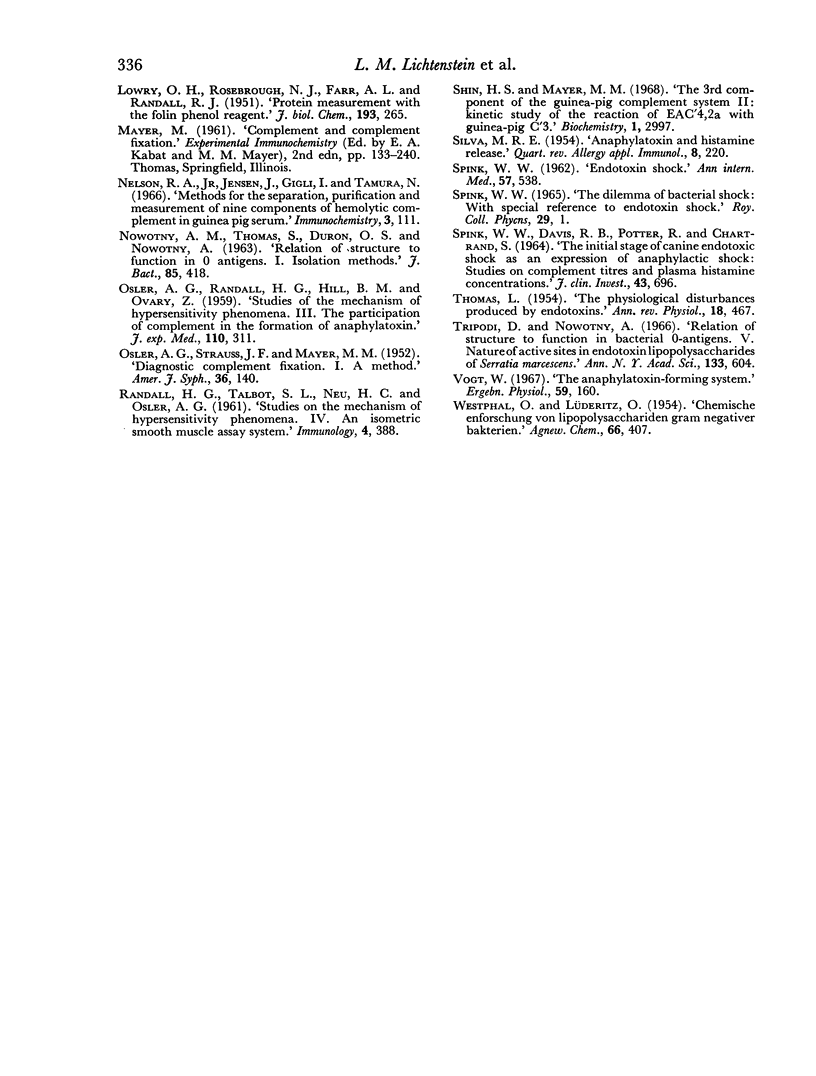
Selected References
These references are in PubMed. This may not be the complete list of references from this article.
- BROCKLEHURST W. E. Slow reacting substance and related compounds. Prog Allergy. 1962;6:539–558. [PubMed] [Google Scholar]
- Bladen H. A., Gewurz H., Mergenhagen S. E. Interactions of the complement system with the surface and endotoxic lipopolysaccharide of Veillonella alcalescens. J Exp Med. 1967 May 1;125(5):767–786. doi: 10.1084/jem.125.5.767. [DOI] [PMC free article] [PubMed] [Google Scholar]
- Cochrane C. G., Müller-Eberhard H. J. The derivation of two distinct anaphylatoxin activities from the third and fifth components of human complement. J Exp Med. 1968 Feb 1;127(2):371–386. doi: 10.1084/jem.127.2.371. [DOI] [PMC free article] [PubMed] [Google Scholar]
- Dias Da Silva W., Lepow I. H. Complement as a mediator of inflammation. II. Biological properties of anaphylatoxin prepared with purified components of human complement. J Exp Med. 1967 May 1;125(5):921–946. doi: 10.1084/jem.125.5.921. [DOI] [PMC free article] [PubMed] [Google Scholar]
- Dias da Silva W., Lepow I. H. Anaphylatoxin formation by purified human C'1 esterase. J Immunol. 1965 Dec;95(6):1080–1089. [PubMed] [Google Scholar]
- GREISMAN S. E. Activation of histamine-releasing factor in normal rat plasma by E. coli endotoxin. Proc Soc Exp Biol Med. 1960 Mar;103:628–632. doi: 10.3181/00379727-103-25618. [DOI] [PubMed] [Google Scholar]
- Gewurz H., Mergenhagen S. E., Nowotny A., Phillips J. K. Interactions of the complement system with native and chemically modified endotoxins. J Bacteriol. 1968 Feb;95(2):397–405. doi: 10.1128/jb.95.2.397-405.1968. [DOI] [PMC free article] [PubMed] [Google Scholar]
- Gewurz H., Page A. R., Pickering R. J., Good R. A. Complement activity and inflammatory neutrophil exudation in man. Studies in patients with glomerulonephritis, essential hypocomplementemia and agammaglobulinemia. Int Arch Allergy Appl Immunol. 1967;32(1):64–90. doi: 10.1159/000229917. [DOI] [PubMed] [Google Scholar]
- Jensen J. Anaphylatoxin in its relation to the complement system. Science. 1967 Mar 3;155(3766):1122–1123. doi: 10.1126/science.155.3766.1122. [DOI] [PubMed] [Google Scholar]
- LOWRY O. H., ROSEBROUGH N. J., FARR A. L., RANDALL R. J. Protein measurement with the Folin phenol reagent. J Biol Chem. 1951 Nov;193(1):265–275. [PubMed] [Google Scholar]
- NOWOTNY A. M., THOMAS S., DURON O. S., NOWOTNY A. Relation of structure to function in bacterial O antigens. I. Isolation methods. J Bacteriol. 1963 Feb;85:418–426. doi: 10.1128/jb.85.2.418-426.1963. [DOI] [PMC free article] [PubMed] [Google Scholar]
- Nelson R. A., Jr, Jensen J., Gigli I., Tamura N. Methods for the separation, purification and measurement of nine components of hemolytic complement in guinea-pig serum. Immunochemistry. 1966 Mar;3(2):111–135. doi: 10.1016/0019-2791(66)90292-8. [DOI] [PubMed] [Google Scholar]
- OSLER A. G., RANDALL H. G., HILL B. M., OVARY Z. Studies on the mechanism of hypersensitivity phenomena. III. The participation of complement in the formation of anaphylatoxin. J Exp Med. 1959 Aug 1;110(2):311–339. doi: 10.1084/jem.110.2.311. [DOI] [PMC free article] [PubMed] [Google Scholar]
- OSLER A. G., STRAUSS J. H., MAYER M. M. Diagnostic complement fixation. I. A method. Am J Syph Gonorrhea Vener Dis. 1952 Mar;36(2):140–153. [PubMed] [Google Scholar]
- RANDALL H. G., TALBOT S. L., NEU H. C., OSLER A. G. Studies on the mechanism of hypersensitivity phenomena. IV. An isometric smooth muscle assay system. Immunology. 1961 Oct;4:388–400. [PMC free article] [PubMed] [Google Scholar]
- ROCHA E SILVA M. Anaphylatoxin and histamine release. Q Rev Allergy Appl Immunol. 1954 Jun;8(2):220–238. [PubMed] [Google Scholar]
- SPINK W. W. Endotoxin shock. Ann Intern Med. 1962 Oct;57:538–552. doi: 10.7326/0003-4819-57-4-538. [DOI] [PubMed] [Google Scholar]
- Shin H. S., Mayer M. M. The third component of the guinea pig complement system. II. Kinetic study of the reaction of EAC'4,2a with guinea pig C'3. Enzymatic nature of C'3 comsumption, multiphasic character of fixation, and hemolytic titration of C'3. Biochemistry. 1968 Aug;7(8):2997–3002. doi: 10.1021/bi00848a041. [DOI] [PubMed] [Google Scholar]
- THOMAS L. The physiological disturbances produced by endotoxins. Annu Rev Physiol. 1954;16:467–490. doi: 10.1146/annurev.ph.16.030154.002343. [DOI] [PubMed] [Google Scholar]
- Tripodi D., Nowotny A. Relation of structure to function in bacterial O-antigens. V. Nature of active sites in endotoxic lipopolysaccharides of Serratia marcescens. Ann N Y Acad Sci. 1966 Jun 30;133(2):604–621. doi: 10.1111/j.1749-6632.1966.tb52392.x. [DOI] [PubMed] [Google Scholar]
- Vogt W. The anaphylatoxin-forming system. Ergeb Physiol. 1967;59:160–184. doi: 10.1007/BF02269143. [DOI] [PubMed] [Google Scholar]
- da Silva W. D., Eisele J. W., Lepow I. H. Complement as a mediator of inflammation. 3. Purification of the activity with anaphylatoxin properties generated by interaction of the first four components of complement and its identification as a cleavage product of C'3. J Exp Med. 1967 Dec 1;126(6):1027–1048. doi: 10.1084/jem.126.6.1027. [DOI] [PMC free article] [PubMed] [Google Scholar]


